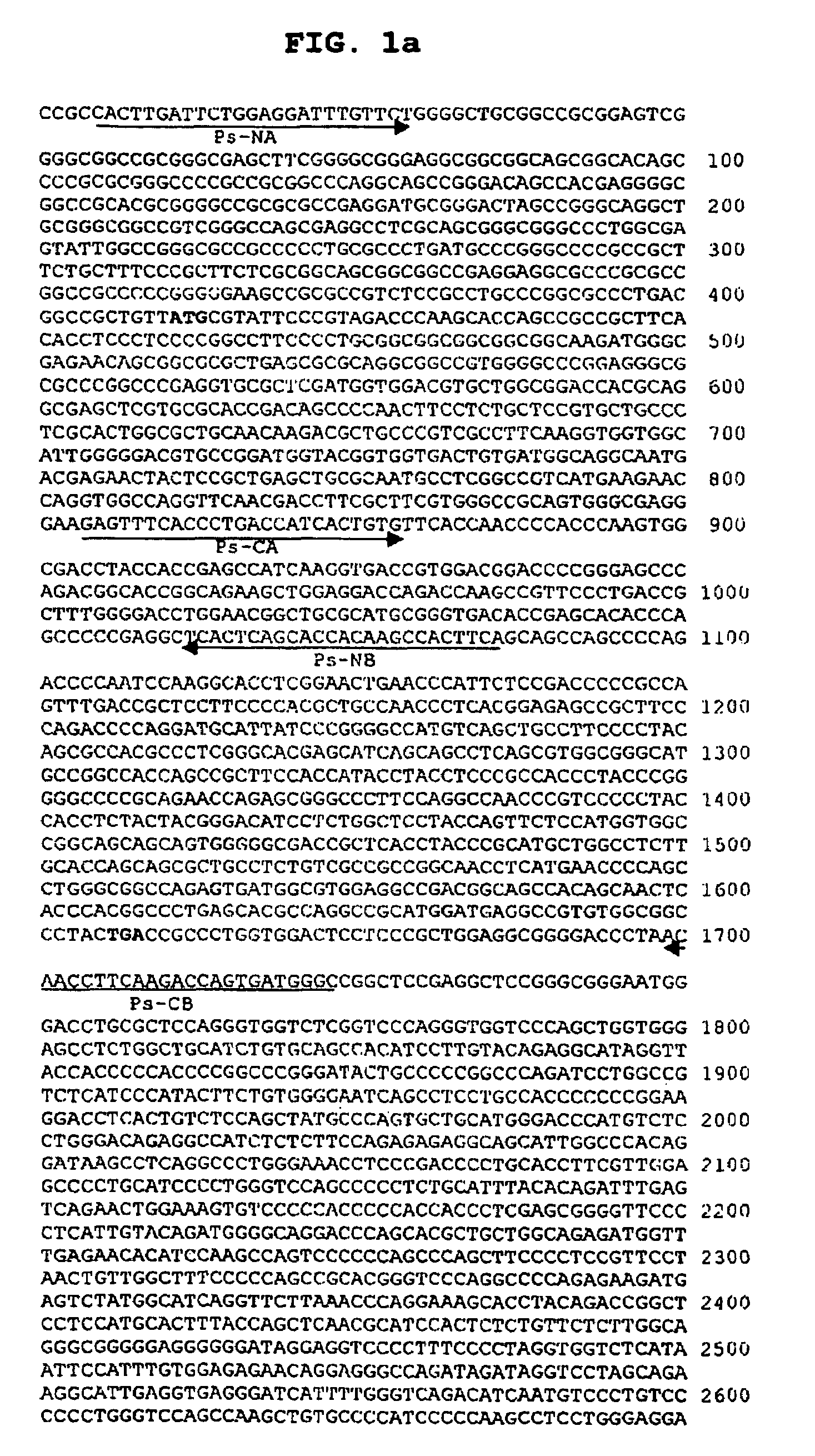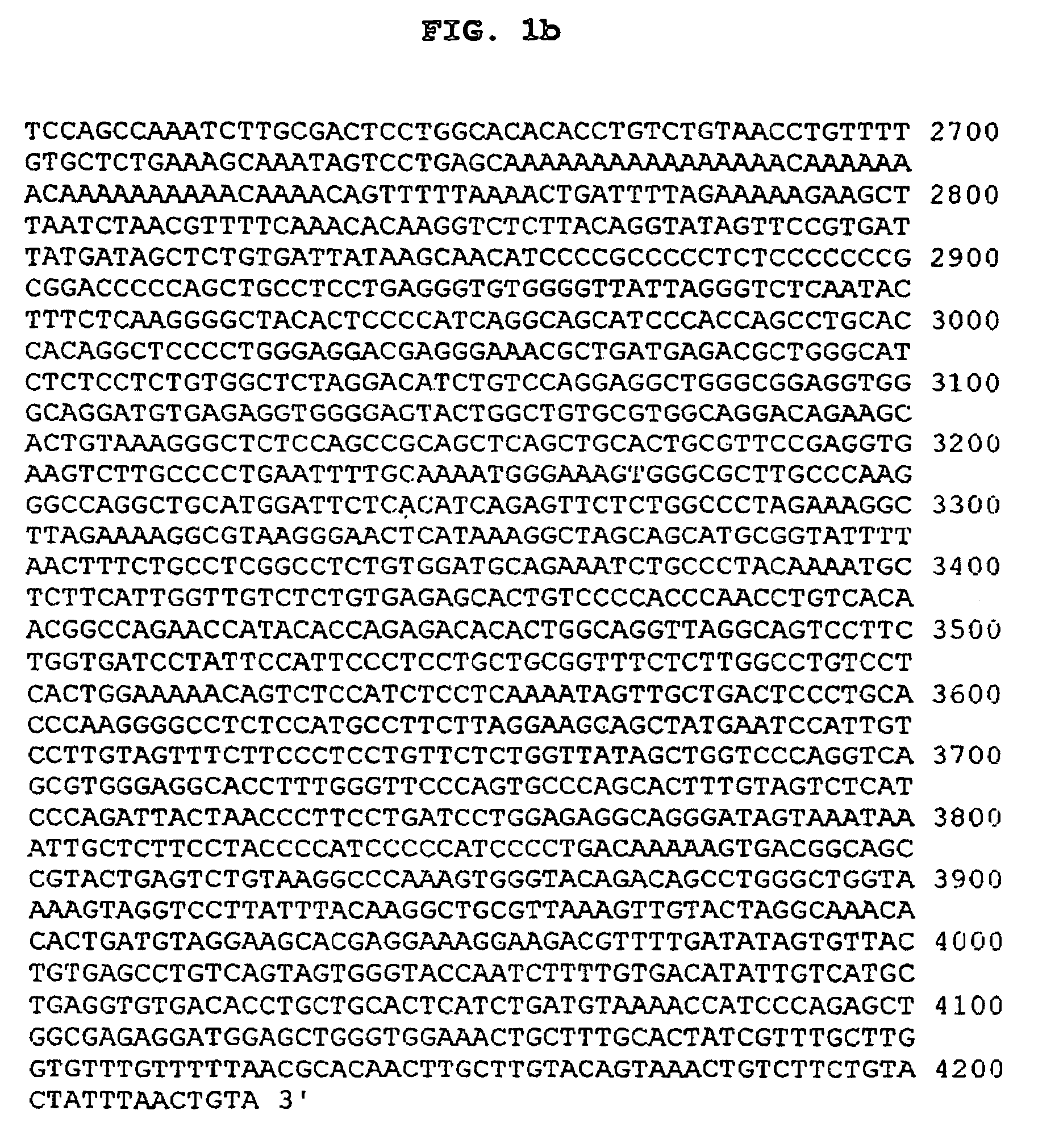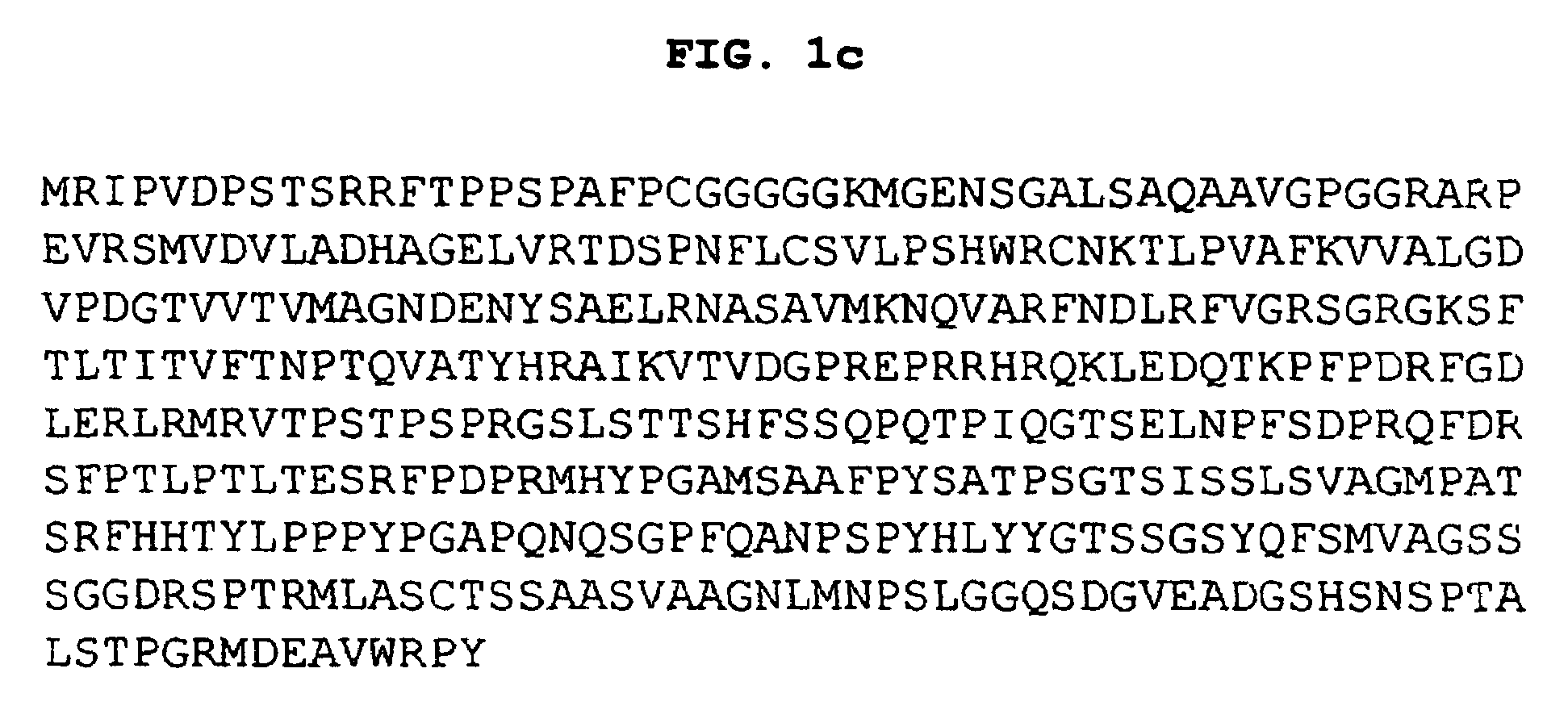RUNX3 gene showing anti-tumor activity and use thereof
a technology of runx3 and anti-tumor activity, applied in the field of runx3 gene, can solve the problems of difficult to discriminate between these types, concomitant significant side effects, and killing some normal cells, and achieve the effect of reducing the expression of runx3
- Summary
- Abstract
- Description
- Claims
- Application Information
AI Technical Summary
Benefits of technology
Problems solved by technology
Method used
Image
Examples
example 1
Establishment of the SNU16-Rx3-AS and MKN28-Rx3 Cell Strains
[0085]To elucidate the function of the RUNX3 gene in vivo, cell strains capable of over-expressing a sense RUNX3 gene and an antisense RUNX3 gene were established as follows.
1-1 Construction of Expression Plasmid Vectors Containing Sense and Antisense RUNX3 Genes
[0086]The human RUNX3 gene cloned by the present inventors in 1995 (Bae et al., Gene, 159 (2):245-248, 1995; cDNA nucleotide sequence GenBank Accession No. Z35278) was used to construct plasmid vectors capable of expressing RUNX3. The cDNA of the RUNX3 gene has the nucleotide sequence SEQ. ID. NO: 1 with an open reading frame ranging from the translation start codon to the translation stop codon, which encodes a polypeptide consisting of 415 amino acids whose putative amino acid sequence is SEQ. ID. NO: 2 (FIGS. 1a to 1c). A DNA fragment comprising CpG islands present in the vicinity of exon 1 of the RUNX3 gene has the nucleotide sequence SEQ. ID. NO: 3 (FIGS. 2a an...
example 2
Cell Death Effect of TGF-β and Role of the RUNX3 Gene in TGF-β-Induced Cell Death
2-1 Cell Death Effect of TGF-β
[0095]SNU16 cells, which normally express the RUNX3 gene, and SNU16-Rx3-AS-c11 and SNU16-Rx3-AS-c12 cells in which an antisense RUNX3 cDNA is over-expressed to selectively inhibit the expression of the normal RUNX3 gene, were individually treated with TGF-β1 (1 ng / ml), after which viable cells were counted over a period of time. The results are shown in FIG. 4a.
[0096]As seen in FIG. 4a, the TGF-β1 treatment induced cell death in SNU16 cells. Almost all SNU16 cells were killed within 2 days after treatment with TGF-β1 at a concentration of 1 ng / ml. However, the SNU16-Rx3-AS-c11 cells, in which the antisense RUNX3 gene was excessively expressed to selectively inhibit the expression of the RUNX3 gene, were not killed after treatment with TGF-β1. These results suggest that the RUNX3 gene is involved in TGF-β1-induced cell death in SNU16 cells.
2-2 Role of RUNX3 Gene in TGF-β In...
example 3
Sugpressive Activity of RUNX3 Against Tumorigenicity
[0100]It is known that TGF-β1-induced apoptosis is a very important mechanism for suppressing the progression of normal cells toward cancer and that most of the factors in the TGF-β1 pathway have tumor suppressor activity. The RUNX3 gene was assayed for tumor suppressor activity using nude mice, with the expectation that an anticancer effect would be seen.
[0101]To this end, the SNU16-Rx3-AS-c11 and SNU16-Rx3-AS-c12 strains, in which RUNX3 gene expression is selectively inhibited and the control-SUN16 strain were suspended in 0.85% phosphate buffered saline (PBS) at a density of 3×107 cells / ml, and 0.3 ml of each suspension was subcutaneously injected into groups of nude mice. Separately, the MKN28-Rx3 strain that shows over-expression of the sense RUNX3 RNA and the control-MKN28 strain were suspended in 0.85% PBS at a density of 5×107 cells / ml, and 0.3 ml of each suspension was subcutaneously injected into other groups of nude mice...
PUM
 Login to View More
Login to View More Abstract
Description
Claims
Application Information
 Login to View More
Login to View More - R&D
- Intellectual Property
- Life Sciences
- Materials
- Tech Scout
- Unparalleled Data Quality
- Higher Quality Content
- 60% Fewer Hallucinations
Browse by: Latest US Patents, China's latest patents, Technical Efficacy Thesaurus, Application Domain, Technology Topic, Popular Technical Reports.
© 2025 PatSnap. All rights reserved.Legal|Privacy policy|Modern Slavery Act Transparency Statement|Sitemap|About US| Contact US: help@patsnap.com



